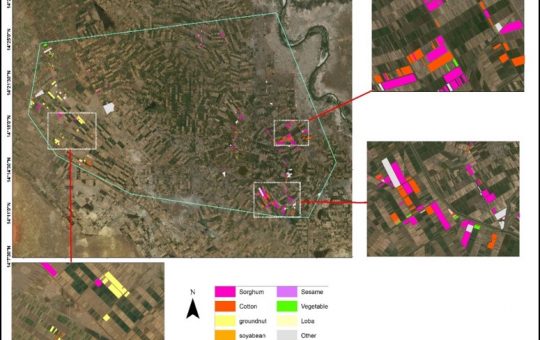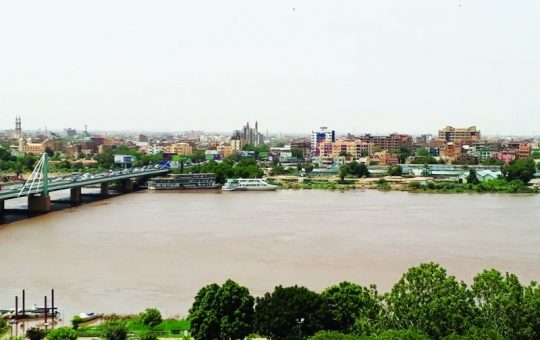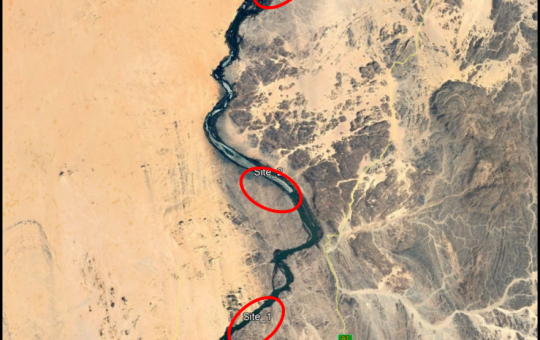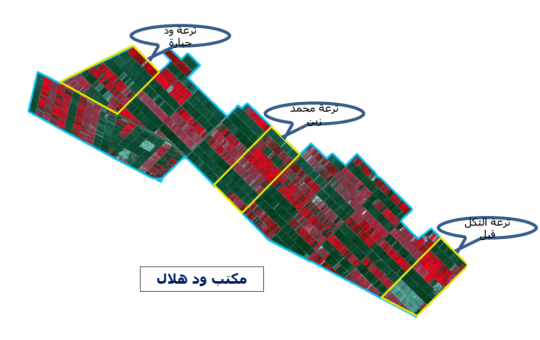Information
No Sidebar
This template supports the unlimited sidebar's widgets.For adding widgets to Portfolio sidebar Click Here

Water scarcity and food security are key concerns for the growing population in the arid and semi‐arid zones. Water is becoming an increasingly scarce resource for agriculture and other competing uses.
With the increased demand for food of a growing population, the
challenge is to increase agricultural production while reducing water. Satellite based ICT (mobile-phones and the web) can play a fundamental role in the communication process.
The Satellite based ICT for improved crop production in the Gezira irrigation scheme is a one year project funded by the Technical Centre for Agricultural and Rural Cooperation (CTA) through its “Building
Viable Delivery Models for ICT4Ag” initiative and being implemented by eLEAF of the Netherlands and the Hydraulics Research Centre (HRC), Sudan within the season 2014/2015. The
project delivers irrigation advisory service based on satellite data to farmers in the Gezira irrigation scheme in Sudan via mobile phone text-messages and a web-portal. The developed tools can monitor field specific information by measuring nine parameters covering crop growth, moisture and minerals in addition to irrigation advice. Forty
four farmers scattered over Gezira Scheme were selected for the pilot testing. The pilot period covered the winter season of 2014/2015 viz.wheat, chickpea and onions crops.
The delivered data on crop growth and agricultural water management are derived from results of the Surface Energy Balance Algorithm for Land (SEBAL). The SEBAL is an algorithm based on the energy
14 budget reaching the earth’s surface. It can compute the actual evapotranspiration of the crops, as well as the biomass production.
High-resolution satellite images from Disaster Monitoring Constellation (DMC) and Landsat 8 supplemented by NPP VIIRS surface temperature were used in operating the SEBAL algorithm for
the ICT project in Gezira Scheme.
This project illustrates the success of the ICT project for agricultural water and crop management in Gezira Scheme of Sudan. Some of the outcomes are, shorter irrigation interval based on actual field
conditions and weather information.
As a result, farmers have irrigated more frequently with an increase of two irrigations compared to the previous season. The total amount of water used for irrigation was less than the previous seasons according to the field interviews, which indicated increase in water use efficiency. The pilot farmers have an increase in wheat production
between 2% -270% compared to previous season. The farmers have better field management as they receive irrigation advice via SMS on a frequent basis regardless of their location. Farmers accepted the new
technology because it is easy, accurate and saved them both time and effort. Interesting information on impacts of nitrogen, water use efficiency and other parameters on biomass production and crop yield were also obtained.
Based on the initiative of the farmers of El Mieleg Block, a workshop was held on 6th November 2017 at El Mieleg Block. The workshop discussed the possibilities and constraints of implementing the ICT
technology. The farmers are willing to pay for the service supported by their associations, the government officials and the insurance companies.
HRC is working now to mobilize resources to make a larger experiment of the Smart ICT technology to include both water supply and use. This will include testing the technology on a sub-system of the Gezira scheme, e.g., one major canal from source up to the filed outlet pipe. All partners: farmers, Block Inspectors, and irrigation engineers will be participating in the experiment.
See Poster
Related Projects
-

Water Productivity
This project was one of the outcomes of the strategic partnership-setting meeting between the Minister of Irrigation and Water Resources (MoIWR) and the Food and Agricultural Organization (FAO) Sudan...
-

أثر مياه النيل على العلاقات السودانية المصرية ما بعد سد النهضة
تناولت الدراسة بشيء من التفصيل والتحليل أثر مياه النيل علي علاقات السودان ومصر ما بعد قيام سد النهضة الأثيوبي، وكان ذلك في أربع فصول يحوي كل عدة فصل محاور....
-

Selection of the Nile gauging site upstream High Aswan Dam
As per a request from the Permanent Joint Technical Commission for Nile Water (PJTC), The Hydraulics Research Center (HRC) conducted a study to investigate a suitable location of a...
-

Mapping of Cropped Areas in Gezira Irrigation Scheme Using Remote Sensing and GIS techniques
Irrigation schemes in Sudan face many challenges. One of these challenges is to determine the actual cultivated area for the crops, in particular for large schemes such as Gezira...
-

Investigation of the Drainage Problems of Sabir Branch Protective Drain in New Halfa Irrigation Scheme
This study is intended to investigate the flooding problems of Sabir Branch Protective drain, where every year floods flowing from Albutana plateau threatens New Halfa Irrigation Scheme and also...
